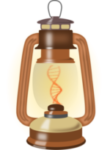Mother’s Day is a holiday for celebrating motherhood and thanking mothers for all they do. In the United States, it is held every year on the second Sunday in May.
Mother’s Day as celebrated today traces back to Anna Jarvis, who, following the death of her mother on May 9, 1905, devoted the rest of her life to establishing Mother’s Day as a national, and later an international holiday. Some earlier celebrations relating to mothers include:
- “Mothering Day” celebrated in England on the fourth Sunday of Lent. It was originally a time when English Catholics were supposed to travel to attend Mass in their “Mother Church” rather than in their local parish, so mothers could be with their children on this day. By the Reformation, it had become a day for children to visit their parents.
- “Mother’s Day Work Clubs” started by Anna Jarvis’s mother, Anna Reeve Jarvis (1832-1905), to improve sanitation and health in the area. These clubs helped both Union and Confederate encampments to control typhoid outbreaks. They also held a “Mothers’ Friendship Day” to bring families divided by the Civil War back together.
- The “Mother’s Day” antiwar observances founded by Julia Ward Howe in 1872.
Julia Ward Howe is sometimes called the “founder of Mother’s Day,” which implies that Julia Ward Howe’s June 2nd occasion and Anna Jarvis’ second-Sunday-in-May event are the same thing. But even though Mother’s Day was celebrated in eighteen cities in 1873, it did not become permanent. Howe personally financed Mother’s Day antiwar observances for about ten years in Boston, but then the observances died out.
Julia Ward Howe’s Mother’s Day, celebrated on June 2nd, was first proclaimed around 1870 by Julia Ward Howe’s Mother’s Day Proclamation. In 1872, Howe asked for it to be observed nationally each year. Howe’s “Mother’s Day” was originally a call for pacifism and disarmament by women. The original Mother’s Day Proclamation was:
Arise then…women of this day!
Arise, all women who have hearts!
Whether your baptism be of water or of tears!
Say firmly:
“We will not have questions answered by irrelevant agencies,
Our husbands will not come to us, reeking with carnage,
For caresses and applause.
Our sons shall not be taken from us to unlearn
All that we have been able to teach them of charity, mercy and patience.
We, the women of one country,
Will be too tender of those of another country
To allow our sons to be trained to injure theirs.”
From the voice of a devastated Earth a voice goes up with
Our own. It says: “Disarm! Disarm!
The sword of murder is not the balance of justice.”
Blood does not wipe our dishonor,
Nor violence indicate possession.
As men have often forsaken the plough and the anvil
At the summons of war,
Let women now leave all that may be left of home
For a great and earnest day of counsel.
Let them meet first, as women, to bewail and commemorate the dead.
Let them solemnly take counsel with each other as to the means
Whereby the great human family can live in peace…
Each bearing after his own time the sacred impress, not of Caesar,
But of God –
In the name of womanhood and humanity, I earnestly ask
That a general congress of women without limit of nationality,
May be appointed and held at someplace deemed most convenient
And the earliest period consistent with its objects,
To promote the alliance of the different nationalities,
The amicable settlement of international questions,
The great and general interests of peace.
Early “Mother’s Day” was mostly marked by women’s peace groups. A common early activity was the meeting of groups of mothers whose sons had fought or died on opposite sides of the American Civil War.
The first known observance of Mother’s Day in the U.S. occurred in Albion, Michigan, on May 13, 1877, the second Sunday of the month. According to local legend, Albion pioneer, Juliet Calhoun Blakeley, stepped up to complete the sermon of the Rev. Myron Daughterty, who was distraught because an anti-temperance group had forced his son and two other temperance advocates to spend the night in a saloon and become publicly drunk. In the pulpit, Blakeley called on other mothers to join her. Blakeley’s two sons, both travelling salesmen, were so moved that they vowed to return each year to pay tribute to her and embarked on a campaign to urge their business contacts to do likewise. At their urging, in the early 1880s, the Methodist Episcopal Church in Albion set aside the second Sunday in May to recognize the special contributions of mothers.
On February 4, 1904, South Bend, Indiana resident Frank E. Hering made the first Public Plea and started his own campaign for a national observance of “Mother’s Day” in Indianapolis, Indiana.
In 1907, Mother’s Day was first celebrated in a small, private way by Anna Jarvis in Grafton, West Virginia, to commemorate the anniversary of her mother’s death two years earlier, on May 9, 1905. Jarvis started a quest to get wider recognition of Mother’s Day. The celebration organized by Jarvis on May 10, 1908 involved 407 children with their mothers at the Andrew’s Methodist Episcopal Church in Grafton (this church is now the International Mother’s Day Shrine). Grafton is, thus, the place recognized as the birthplace of Mother’s Day.
The subsequent campaign to recognize Mother’s Day was financed by clothing merchant John Wanamaker. As the custom of Mother’s Day spread, the emphasis shifted from the pacifism and reform movements to a general appreciation of mothers. The first official recognition of the holiday was by West Virginia in 1910. A proclamation designating the second Sunday in May as Mother’s Day was signed by U.S. President Woodrow Wilson on May 14, 1914.
